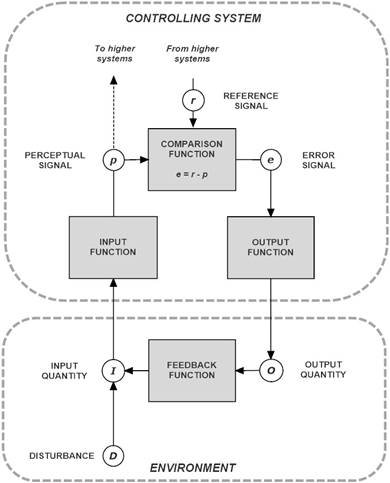[From Fred Nickols (2016.06.26.0825 ET)]
I’d like to use the diagram shown below to clarify my understanding of cause-and-effect in a closed loop.

Let’s start with the comparison function. If there is a mismatch between the reference signal and the perceptual signal, an error exists. This error “causes” output.
The output, by way of the feedback function, affects some kind of change in the input quantity. Output “causes” change in the input quantity.
Changes in the input quantity are reflected in changes in the perceptual signal; in other words, they “cause” changes in the perceptual signal.
Changes in the perceptual signal “cause” changes in the difference or discrepancy between the perceptual signal and the reference signal.
Changes in the reference signal “cause” changes in the result of comparing it with the perceptual signal, reducing or increasing error, causing output, etc., etc., etc.
And disturbances also “cause” changes in the input quantity, thus further “causing” changes in the perceptual signal, the comparison result, the error signal, etc., etc., etc.
All this is happening lightning fast in most cases. Nevertheless, there is some kind of lag time involved and thus, at any given point in time, one thing can be looked at as the cause of the next one in the loop.
So, depending on how you look at it, any item in the loop can be looked at as cause or as effect.
Do I have it right?
Regards,
Fred Nickols, CPT
Writer & Consultant
“Assistance at a Distance”SM
www.nickols.us/SeaStories.html
PCT Formal Model - Simplified.SDR (57.6 KB)